Planning a trip to Chisapani, a serene hill station in Nepal, offers travelers a perfect blend of natural beauty, adventure, and cultural experiences. Whether you’re a seasoned traveler or a first-time visitor, here’s a comprehensive guide to help you plan the perfect trip to Chisapani.
1. Decide on the Best Time to Visit
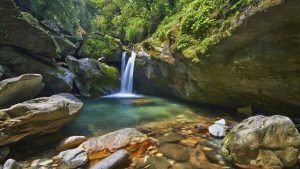
Chisapani is beautiful year-round, but the best times to visit are during the spring (March to May) and autumn (September to November) seasons. During these periods, the weather is pleasant, and the skies are clear, providing stunning views of the Himalayas. In spring, the hillsides are adorned with blooming rhododendrons, and in autumn, the post-monsoon freshness enhances the greenery and mountain vistas.
Visiting during these optimal seasons ensures comfortable hiking conditions and the best photographic opportunities. The clear skies in autumn, in particular, offer unparalleled visibility of the snow-capped peaks, making it an ideal time for trekkers and nature enthusiasts.
2. Plan Your Travel Itinerary
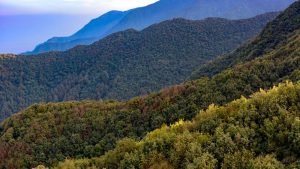
Creating a well-structured itinerary can significantly enhance your travel experience. Here’s a suggested itinerary for Chisapani:
- Day 1: Arrival in Kathmandu
- Explore the vibrant city of Kathmandu, visit historic sites such as Swayambhunath (Monkey Temple), Boudhanath Stupa, and Pashupatinath Temple.
- Enjoy local Nepali cuisine at Thamel, a popular tourist hub.
- Day 2: Drive to Sundarijal and Hike to Chisapani
- Start your day with a hearty breakfast in Kathmandu.
- Drive to Sundarijal, a scenic village located approximately an hour away.
- Begin your hike to Chisapani, which takes about 4-5 hours. The trail passes through lush forests, waterfalls, and terraced fields.
- Upon arrival, check into your accommodation and relax.
- Day 3: Explore Chisapani
- Spend the day exploring Chisapani. Enjoy nature walks, visit local villages, and take in panoramic views of the Himalayas.
- Engage with the local community to learn about their culture and way of life.
- Capture stunning photographs of the sunrise and sunset over the mountains.
- Day 4: Hike Back to Sundarijal and Return to Kathmandu
- After breakfast, hike back to Sundarijal.
- From Sundarijal, drive back to Kathmandu.
- Spend the evening in Kathmandu, perhaps indulging in some last-minute shopping or enjoying a farewell dinner.
3. Arrange Your Transportation
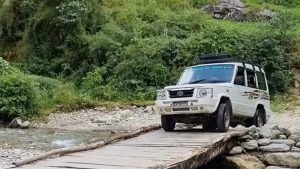
Transportation is a key aspect of your trip planning. To reach Chisapani, you’ll first need to get to Sundarijal. Sundarijal is well-connected to Kathmandu by road, and you have several options:
- Public Buses: Economical but can be crowded and less comfortable.
- Taxis: Convenient and faster but slightly more expensive.
- Private Transfers: Ideal for comfort and convenience, especially if you are traveling with a group.
From Sundarijal, the hike to Chisapani is a memorable journey through the natural landscape of Shivapuri National Park. Ensure you have a reliable mode of transportation arranged in advance to avoid any last-minute hassles.
4. Book Your Accommodation
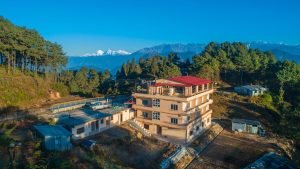
Chisapani offers a range of accommodation options to suit different budgets and preferences. For a luxurious and relaxing stay, consider booking a room at the Himalayan Vista Hotel. This hotel is renowned for its stunning views, modern amenities, and excellent service. Staying here ensures a comfortable base from which to explore the surrounding trails and natural beauty.
For budget-conscious travelers, there are several guesthouses and lodges that provide basic but comfortable accommodations. Booking in advance, especially during peak seasons, is recommended to secure your preferred lodging.
5. Pack Essentials

Packing appropriately is crucial for a comfortable and enjoyable trip. Here’s a checklist of essentials to bring:
- Clothing: Layered clothing to accommodate varying temperatures, a rain jacket, comfortable hiking shoes, warm hat, gloves, and a scarf.
- Gear: A sturdy backpack, trekking poles, water bottles, a map or GPS device, and a camera to capture the scenic views.
- Miscellaneous: Sunscreen, a hat, sunglasses, a first aid kit, snacks, insect repellent, and personal hygiene items.
- Documents: Necessary permits, identification, insurance documents, and some cash (as ATMs may not be readily available).
6. Obtain Necessary Permits
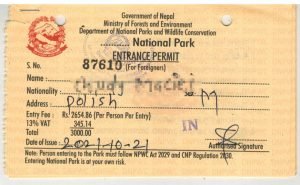
To hike in the Chisapani area, you need to obtain permits such as the Shivapuri National Park entry permit. These permits can be arranged through a trekking agency or directly at the park entrance. Ensure you have all necessary documents and permits to avoid any issues during your hike.
7. Plan Your Activities

Chisapani offers a plethora of activities to suit various interests:
- Trekking: Explore short and long hikes to surrounding viewpoints and neighboring villages. The Chisapani-Nagarkot trek and Chisapani-Sundarijal hike are popular options.
- Photography: Capture breathtaking landscapes, sunrises, and sunsets. The clear skies and panoramic views of the Himalayan range provide excellent photographic opportunities.
- Cultural Experiences: Interact with local communities, visit traditional villages, and learn about their customs and way of life. Participate in local festivals if your visit coincides with any cultural events.
- Relaxation: Unwind at your hotel, enjoy the peaceful environment, and savor local cuisine. The tranquility of Chisapani is perfect for relaxation and rejuvenation.
8. Stay Connected
While Chisapani offers a chance to disconnect and enjoy nature, it’s wise to inform someone of your travel plans and expected return. Mobile networks may be limited, so plan accordingly. Carry a fully charged phone and consider renting a portable charger.
9. Be Environmentally Conscious

Respect the natural beauty of Chisapani by practicing responsible tourism. Here are some tips:
- Carry Your Trash Back: Do not leave any litter behind. Use reusable containers and bags to minimize waste.
- Avoid Using Plastic: Bring reusable water bottles and bags. Avoid single-use plastics.
- Follow Local Guidelines: Stick to designated trails, respect wildlife, and adhere to the Leave No Trace principles to minimize your environmental impact.
10. Prepare for Emergencies

Ensure you have a basic understanding of first aid and emergency procedures. Keep local emergency contact numbers handy and be aware of the nearest medical facilities. It’s also wise to have travel insurance that covers trekking activities.
Conclusion
Planning a trip to Chisapani is a rewarding experience that promises adventure, tranquility, and cultural richness. By following these steps, you’ll be well-prepared to enjoy everything this charming destination has to offer. Whether you’re trekking through lush forests, capturing breathtaking landscapes, or relaxing at the Himalayan Vista Hotel, Chisapani is sure to leave you with unforgettable memories. Happy travels!
